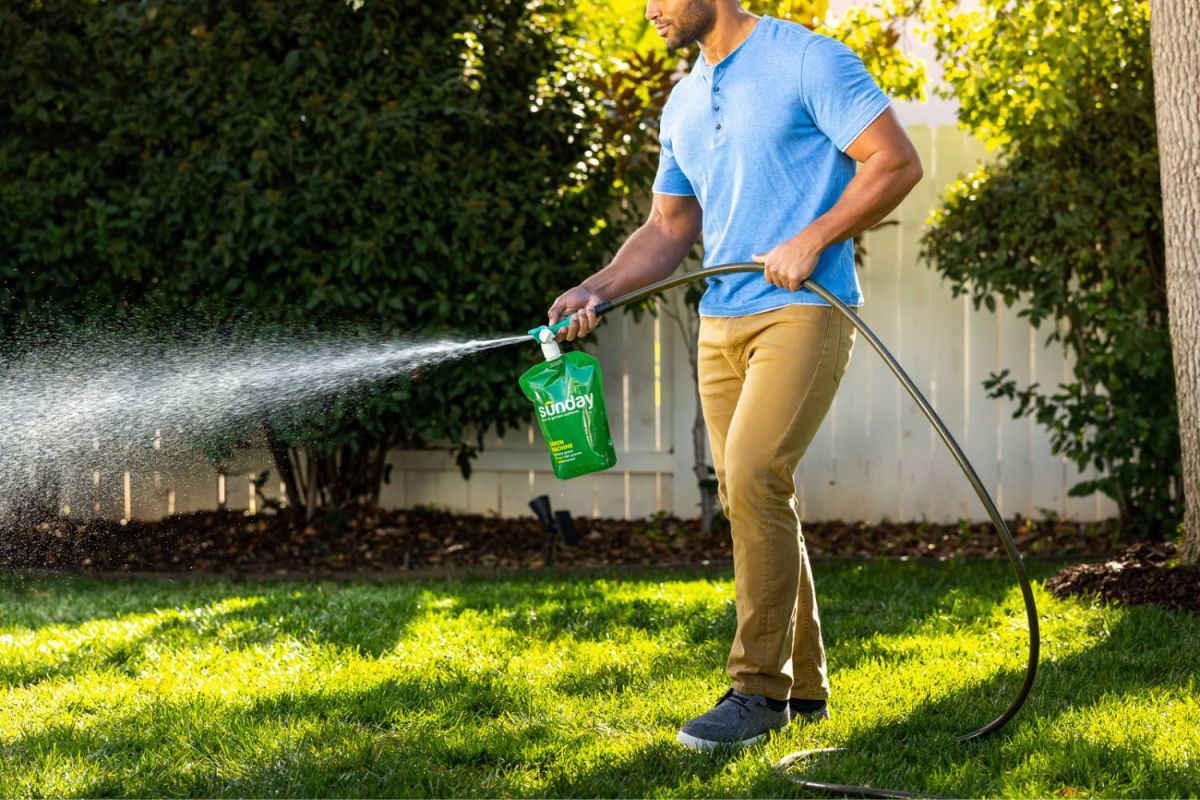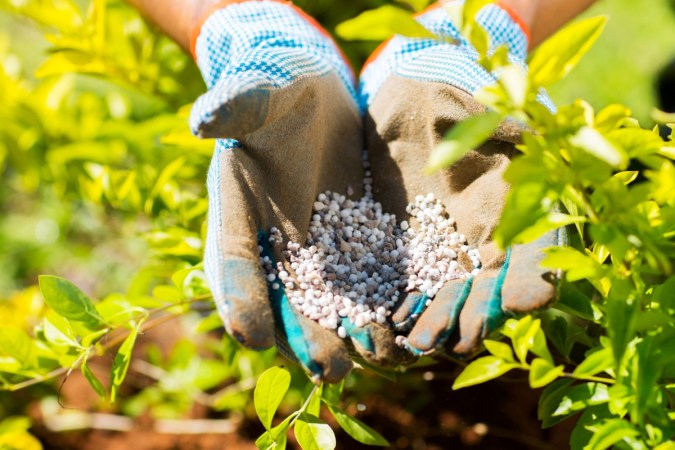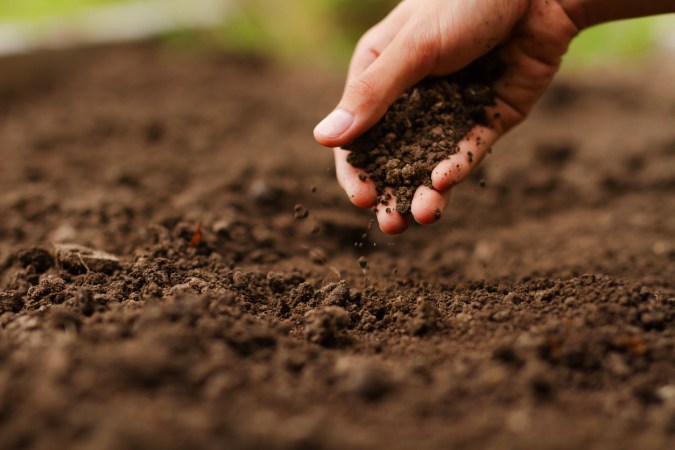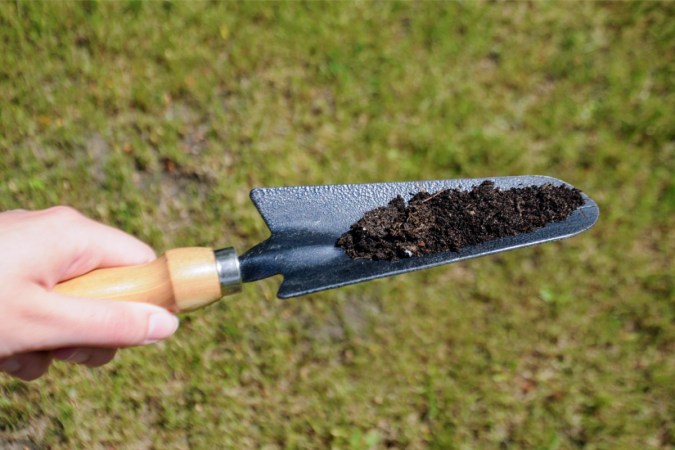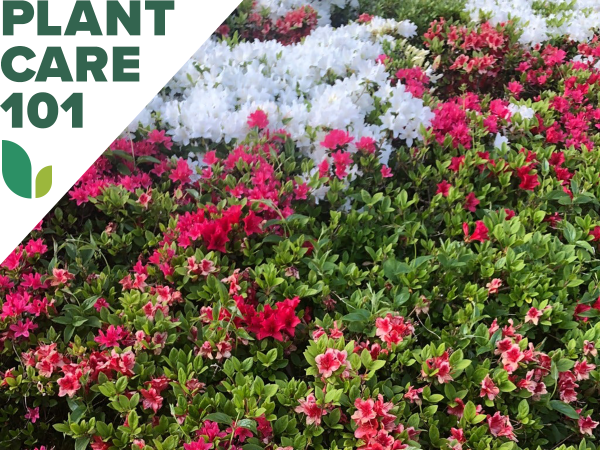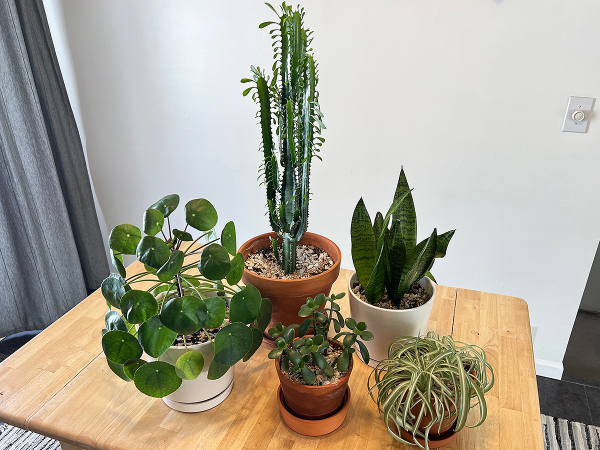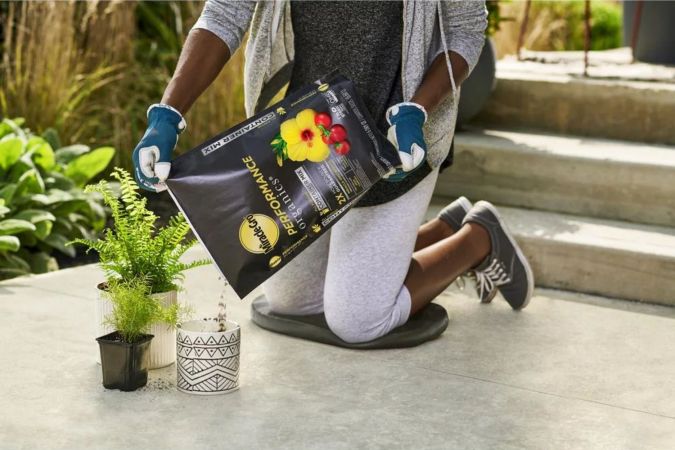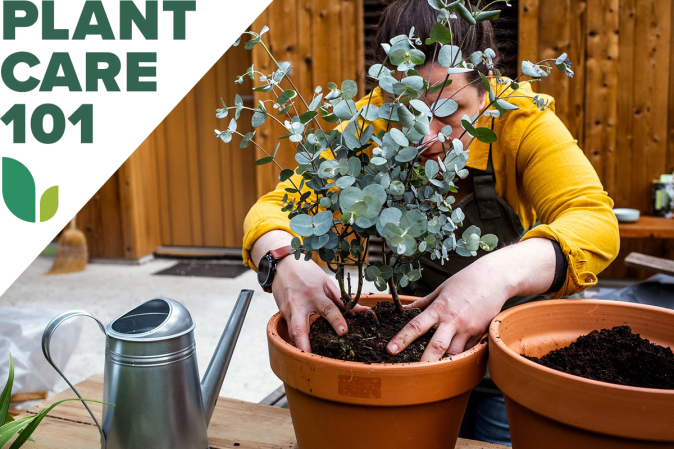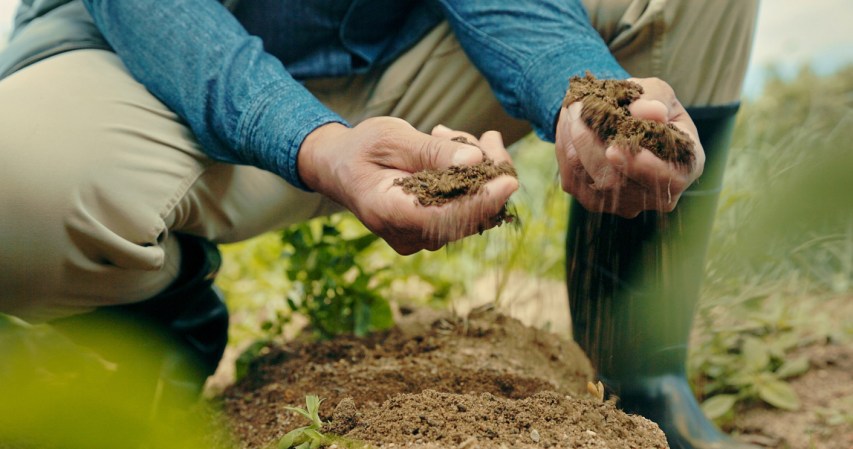We may earn revenue from the products available on this page and participate in affiliate programs. Learn More ›
When trying to achieve a lush lawn or a thriving flower bed, there’s more to the task than watering at the right times or planting in the right spot. Sometimes the secret to success is soil-deep. For gardeners, that means monitoring the pH of their yard’s soil. This number, sitting between 0 and 14, can be the difference between nutrient-dense soil that fosters growth (resulting in healthy and happy plants), and porous soil that’s typically inhospitable to plant life.

Soil pH is a measurement of the concentration of hydrogen ions in the soil; the abbreviation “pH” stands for “potential hydrogen.” The more hydrogen ions in the soil, the higher the soil’s pH. The higher a soil’s pH levels, the more alkaline it is, which means there aren’t enough nutrients in the soil for plants to absorb. Subsequently, a higher soil pH level can lead to nutrient deficiencies in both bedding plants and lawns—and therefore unhappy-looking plants. Plants that grow in soil with a high pH can show symptoms of diseases, such as pale green or yellow leaves, brown spots, wilting, and stunted growth—this could result in incorrect treatment. Luckily, lowering the pH in soil is a simple process with the right tools, products, and a little patience.
Time required: 1 to 12 months
Difficulty: Beginner
Before You Begin…

Commercial potting soil for container growing will already have the correct pH, so gardeners using this type of soil won’t need to worry about lowering the soil’s pH levels. However, homeowners growing plants directly in the ground or growing a lawn will want to monitor the pH level of their soil.
Most soils have a pH value somewhere between 3.5 and 10—soil with a pH value of 7 is considered neutral. If the pH is higher than 7.5 it is considered alkaline; lower than 7 and it’s considered acidic. Soils with a pH below 5.5 are considered strongly acidic. Testing the soil will reveal the exact pH level of a garden’s soil.
Tips and Safety Considerations for Lowering Soil pH
- The use of gloves, eye protection, and a mask when applying any soil amendment or fertilizer is strongly encouraged to avoid health hazards or injury.
- Days with mild weather and no wind are ideal for product application.
- It’s best practice to keep pets and children away from the area to avoid accidental ingestion or exposure.
- Following manufacturer directions for application, including the specific ratio of product to use, can prevent rendering soil pH levels too acidic or keeping soil too alkaline.
- It’s best to amend soil before planting.
STEP 1: Identify the soil pH requirements for the current or planned garden or lawn.
Before deciding how to adjust pH in soil, it’s important to evaluate what will grow there, as different types of plants have different soil pH-level requirements. For example, grass, veggies, and many annuals and perennials are tolerant of a wider range on the soil pH scale. Very generally speaking, most plants prefer a pH between 6.5 and 7.5; however, some plants, such as blueberries and rhododendrons, prefer more acidic soil (a pH value below 6.5) and will be far less tolerant of alkaline soil. Determining what will be grown in the garden is essential so gardeners will know what the optimal soil pH should be.

STEP 2: Test the soil’s current pH level.
The typical gardener searching for how to test soil pH may find that the easiest way to do so is with one of the best soil test kits. The results of the test will be a number on the soil pH scale, which has a range between 0 and 14. If the soil test kit shows a pH level above 7.5, then the soil’s pH will need to be lowered to ensure that anything planted there will thrive. Gardeners may also wish to purchase one of the best pH meters to test soil alkalinity levels on a regular basis.

STEP 3: Consider the soil’s composition.
The type of soil will influence what to do next in order to lower the soil pH. Soil composition is determined by how much sand, silt, or clay the soil has. All of these indicate how well soil can retain nutrients and moisture, and soils are typically classified as being clay, sandy, or silty. This information is important when gardeners are deciding what additives to use to lower the soil’s pH levels. A dense, clay soil benefits from the use of elemental sulfur; however, elemental sulfur takes months to break down enough to be safe for planting. By contrast, a fast-draining, sandy soil can have its pH effectively lowered with the use of aluminum sulfate, but the process may need to be repeated each growing season to maintain ideal soil pH.
A quick test can reveal what type of soil you have: Take a handful of damp (but not soggy) soil and squeeze it into a ball. If it falls apart, it’s a more granular soil with more sand and gravel. If it holds together, it’s silt. Take the ball and drop it onto a hard surface like a concrete walkway. If it stays together, the soil is heavy clay.
STEP 4: Add elemental sulfur or aluminum sulfate to lower soil’s pH.
The two most common additives for lowering a soil’s pH are elemental sulfur and aluminum sulfate. Too much of an additive can be harmful for the soil, so it’s crucial to follow the manufacturer’s recommendations. Regardless of which of these common additives is used, adding additional materials such as mulch and manure will likely enrich the soil and make it easier to work with. As these organic materials break down, they can make the soil acidic naturally.
Elemental sulfur is ideal for lowering the soil pH in a dense, clay soil, but it requires time to break down enough to be safe for planting. Ideally, it will be incorporated into the soil a year prior to planting if possible. The big advantage is in how much sulfur to lower pH in lawn soil that’s needed: Elemental sulfur is economical, so if the area treated is large enough, this may be a good choice. Aluminum sulfate for plants is quicker-acting than elemental sulfur because it is a water-soluble additive that dissolves instantly where moisture is present. This means it can lower the soil’s pH level almost on contact. It is not as economical as elemental sulfur so it isn’t ideally suited for large areas, but it is very user-friendly. With either additive, the recommended amount is generally not added all at once; it is usually added gradually over several months by working it lightly into the soil and watering well each time. Testing the soil again after 3 months can indicate if the soil pH levels are decreasing. Some soils may require repeated applications to show a change.
An important note: When searching for how to make soil acidic naturally and lower soil pH, sulfuric acid is often touted as a method, as it is fast-acting. However, it is considered a very dangerous way to lower soil pH and is not recommended for use by home gardeners. Although some industry professionals do occasionally use it to reduce the soil pH around established trees, sulfuric acid is not considered safe for the home gardener. Sulfuric acid is a corrosive substance which, according to the Centers for Disease Control and Prevention, can be destructive to skin, eyes, teeth, and lungs, with severe exposures resulting in death.

STEP 5: Maintain the soil’s pH using a well-balanced fertilizer.
Once the soil’s pH levels have been lowered, well-balanced fertilizers can maintain the right soil pH. These fertilizers contain a balance of ingredients, such as what’s found in a product with 10-10-10 NPK (nitrogen, phosphorus, and potassium) values. Ammonium-containing nitrogen fertilizers, such as ammonium sulfate or urea, can also help maintain the acidity levels in soil, though they should not be relied on solely to lower soil pH levels. One of the best things to do for garden soil is to incorporate organic materials that break down slowly over time, creating a sustained pH balance in the soil. These include peat moss or mulch that contains pine needles or other acidic plant materials. Additionally, adding manure to the soil is a great way to lower the soil pH while also providing immediate nutrients for the plants and making the soil more workable.

STEP 6: Continue to test soil every 3 years.
By using a combination of faster-acting additives and slow-release organic matter, the soil will likely maintain a neutral pH level for an extended time. According to the Mississippi State Extension, gardeners should test their soil every 3 years, or when there will be a dramatic change in what will be planted there. A soil sample should also be taken if there are problems with plant health.
While it does take time to test soil and integrate the right additives to reverse a high soil pH, it’s an essential step in making sure the plants thrive. The good news is, once a soil’s pH is significantly lowered, the gardener simply needs to maintain it with proper nutrients and regular soil testing—something that any good gardener will say is the secret to their success.
FAQs
Although having high soil pH levels is a relatively common problem, especially in areas with dense clay soil that naturally tends to be more alkaline, there are still a number of frequently asked questions that come up when gardeners are trying to determine the best way to lower soil pH or simply how to change soil pH. Here are some of the most prevalent questions that come up for the home gardener.
Q. What is the cheapest way to lower soil pH?
The cheapest way to lower soil pH is using elemental sulfur; however, it can take a long time (several months to a year) to adequately break down enough in the soil for planting.
Q. Can coffee grounds lower soil pH?
Coffee grounds do contain compounds that make soil healthy, mainly carbon and nitrogen, but they do not contain enough acidity to effectively lower soil pH significantly.
Q. Does vinegar permanently lower soil pH?
Vinegar does not permanently lower soil pH. Vinegar only changes the pH of the water in the soil and not the mineral portion, so once regular water or rain is introduced, the vinegar is essentially rendered nonexistent.
Q. Does Epsom salt lower pH in soil?
No, Epsom salt has a neutral pH value and will not lower the pH in soil (nor will it increase it).

